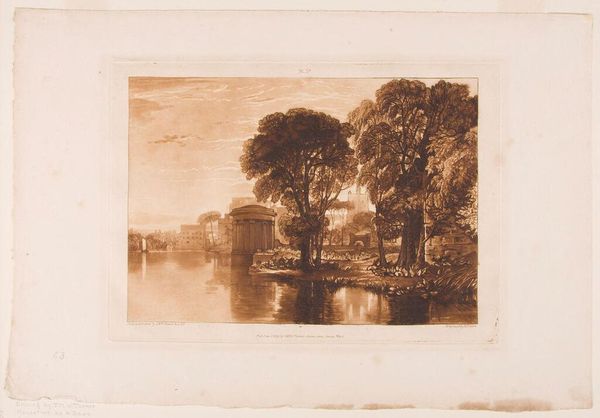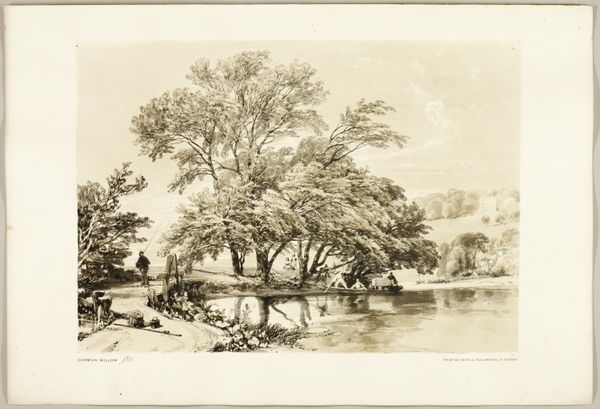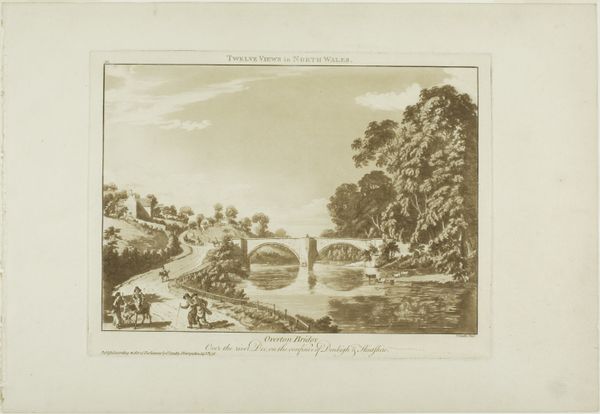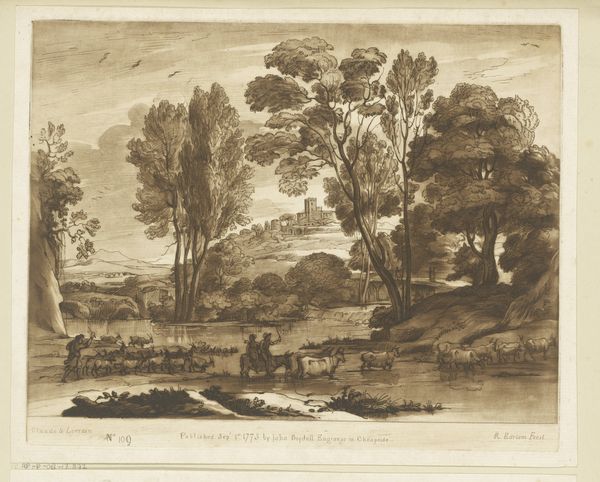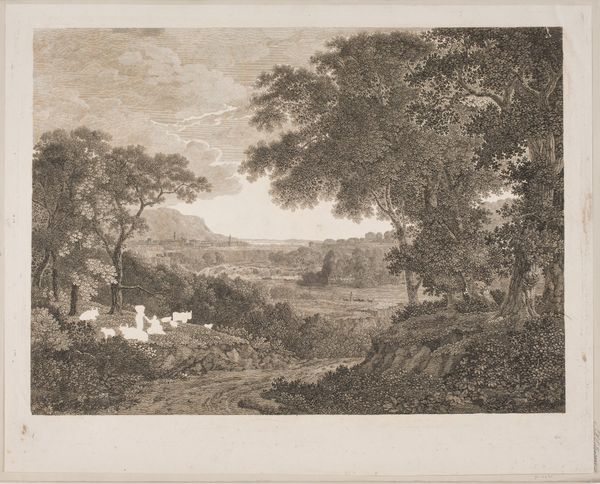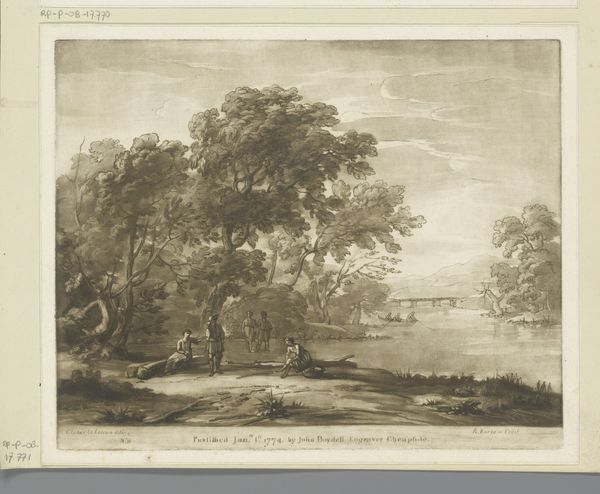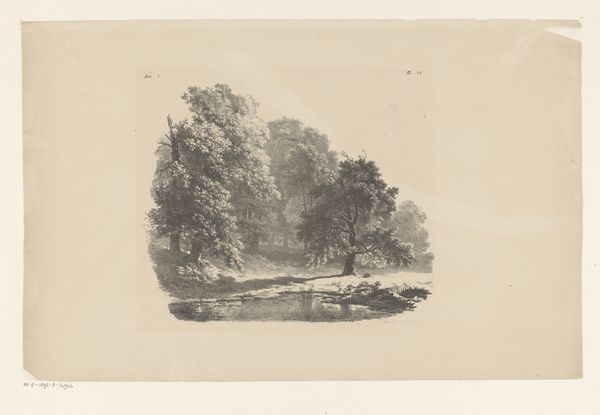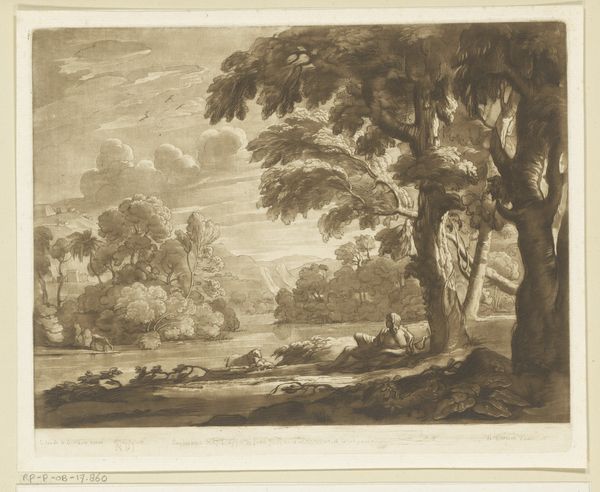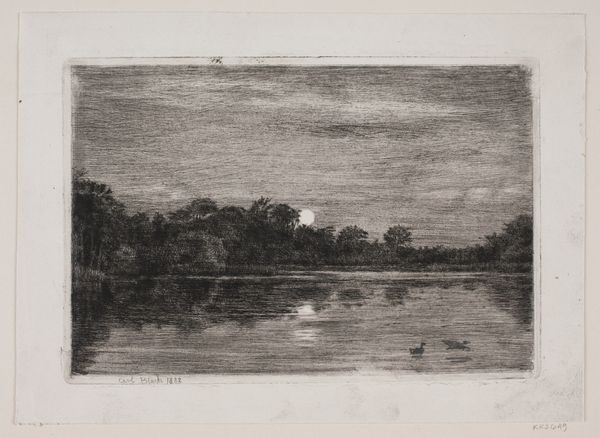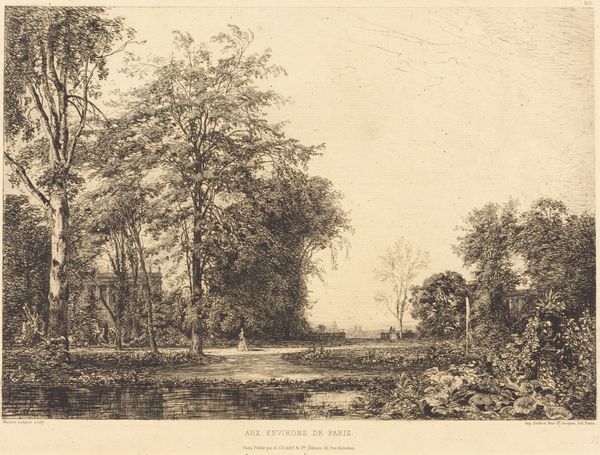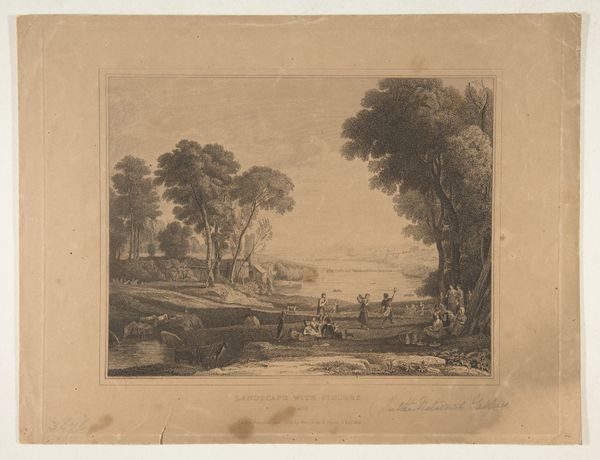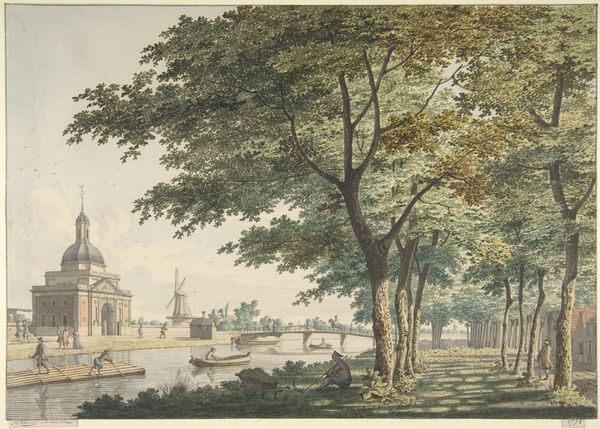
Isleworth (Liber Studiorum, part XIII, plate 63) 1819
0:00
0:00
drawing, print, etching
#
drawing
# print
#
etching
#
landscape
#
romanticism
Dimensions: plate: 7 1/4 x 10 3/8 in. (18.4 x 26.4 cm) sheet: 8 1/4 x 11 9/16 in. (21 x 29.4 cm)
Copyright: Public Domain
This print, Isleworth, was made by J.M.W. Turner as part of his ‘Liber Studiorum’ series. It combines etching and mezzotint, processes which involve a high degree of technical skill. First, a copper plate was coated with wax and the design was etched into it with needles. The plate was then immersed in acid, which bit into the exposed lines. Then came the mezzotint: the entire surface was roughened with a tool called a ‘rocker’ and then burnished smooth in areas to create light and shadow. This tonal range gives the print its atmospheric quality, evoking the tranquility of the Thames. Prints like this were made in multiples, and affordable to a growing middle class. Turner managed every stage of the printmaking process, from his original drawing to overseeing the work of engravers, and selling them on the market. This entrepreneurial approach allowed him to circulate his aesthetic vision widely, blurring boundaries between the unique artwork and the designed multiple. Ultimately, understanding the materials and methods that went into this image helps us appreciate Turner's innovative approach to artmaking.
Comments
No comments
Be the first to comment and join the conversation on the ultimate creative platform.
